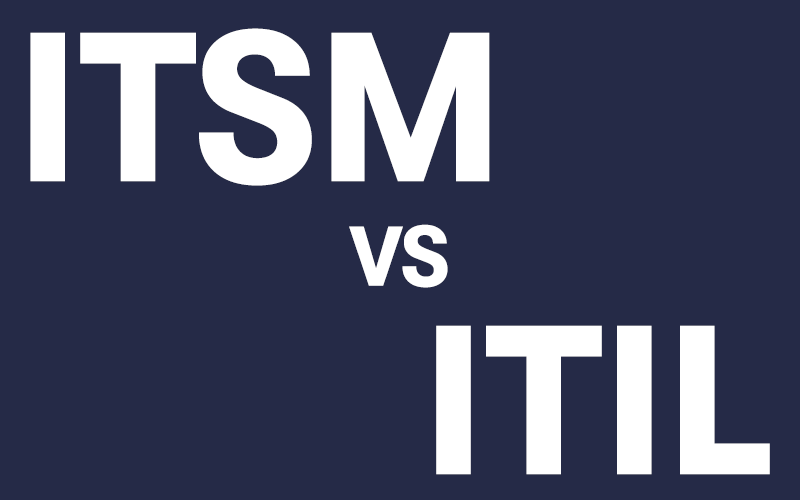ITSM vs ITIL What's the Difference?
In the ever-evolving landscape of information technology, two terms frequently surface at the heart of discussions about improving service delivery and operational efficiency: ITSM (Information Technology Service Management) and ITIL (Information Technology Infrastructure Library).
While both play pivotal roles in the realm of IT management, they are often misunderstood or used interchangeably, leading to confusion about their distinct functions and benefits. This blog post aims to demystify these concepts, exploring the nuanced differences between ITSM's broad-based approach to managing IT services and ITIL's structured framework for aligning those services with business needs.
Join us as we delve into the intricacies of ITSM versus ITIL, shedding light on how they contribute to the optimisation of IT service delivery and support organisational growth.
ITIL vs ITSM What's the Difference?
ITIL and ITSM are two important concepts within the field of IT management, each playing a crucial role in how organisations manage and deliver IT services. While they are closely related and often used together, they have distinct focuses and purposes.
| Aspect | ITIL | ITSM |
| Definition | ITIL 4 is the latest version of the Information Technology Infrastructure Library framework. It provides a set of detailed practices for IT service management, focusing on aligning IT services with the needs of businesses. | ITSM stands for Information Technology Service Management, referring to the entirety of activities, policies, and processes that organisations use to design, deliver, manage, and improve the IT services offered to customers. |
| Scope | ITIL 4 offers a holistic approach to IT service management, integrating concepts from other frameworks and standards like Agile, DevOps, and Lean, focusing on value co-creation, customer collaboration, and flexibility. | ITSM has a broader scope, encompassing the end-to-end management of IT services to meet business and customer needs. It is not restricted to any single framework or set of practices. |
| Framework vs Practice | ITIL 4 is a framework or a set of best practices designed to help organisations manage their IT services more effectively. | ITSM is the practice or discipline of managing and delivering IT services according to business objectives, which can include but is not limited to the application of ITIL principles. |
| Principles | ITIL 4 introduces the Service Value System (SVS) and Four Dimensions model, emphasising a flexible, customer-centric approach to service management. | ITSM principles are not confined to a specific framework and can incorporate principles from various sources tailored to the organisation's needs for efficient service delivery. |
| Application | ITIL 4 is applied through its practices, guiding principles, and governance model, aiming at improving service management and delivery. | ITSM is applied through a combination of processes, technology, and people to ensure effective and efficient delivery of IT services to meet business goals. |
| Adaptability | ITIL 4 emphasises adaptability and flexibility, encouraging organisations to tailor their practices to their specific needs and integrate them with other methodologies like Agile and DevOps. | ITSM, as a practice, inherently requires adaptability to the changing needs of the business and its customers, incorporating various methodologies and technologies as needed. |
Key Differences
Framework vs Practice: ITIL is a framework or set of best practices, while ITSM is the practice of managing IT services.
Scope and Application: ITIL provides specific guidelines and principles to improve IT service management, whereas ITSM encompasses the broader practice of managing these services, not limited to any specific framework.
Purpose and Implementation: ITIL aims to align IT services with business needs through a standardised approach. At the same time, ITSM focuses on delivering and managing IT services that meet business goals using any suitable framework or methodologies.
In summary, ITIL is a part of ITSM, serving as one of the frameworks that can be adopted under the broader practice of ITSM. ITSM is the overarching discipline that focuses on managing IT services effectively, and ITIL provides a detailed, structured approach to help achieve this goal.
What is ITIL?
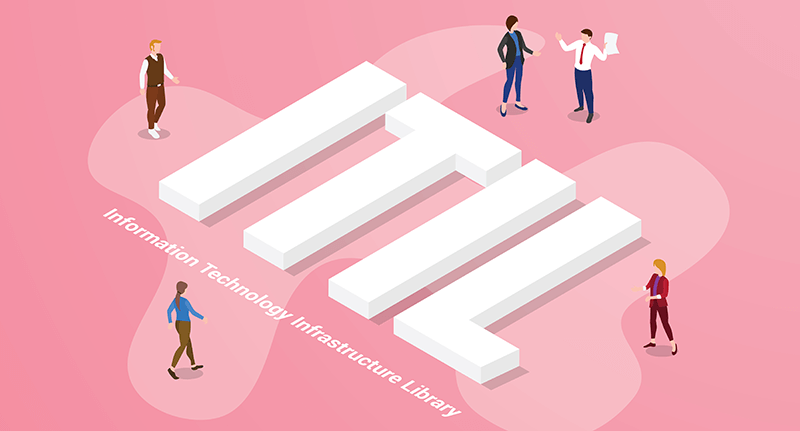
ITIL 4 is the latest iteration of the Information Technology Infrastructure Library, a set of best practices for IT service management designed to assist organisations in navigating the complexities of the modern digital world. Released in 2019, ITIL 4 updates the framework to better align with recent software development and IT operations trends, such as Agile, DevOps, and Lean IT, while maintaining a strong focus on delivering and managing technology services that provide value to businesses and their customers. Key Features of ITIL 4 include:
Service Value System (SVS)
At the heart of ITIL 4 is the Service Value System, which provides a holistic approach to service creation, delivery, and continual improvement. The SVS ensures that every aspect of the service management lifecycle contributes to creating value for stakeholders.
Four Dimensions Model
ITIL 4 introduces the Four Dimensions Model, which emphasises that a balanced focus on four dimensions (Organisations and People, Information and Technology, Partners and Suppliers, and Value Streams and Processes) is critical to the effective and efficient facilitation of value for customers and other stakeholders in the form of products and services.
Guiding Principles
ITIL 4 carries forward the Guiding Principles from ITIL Practitioner, offering a set of universal recommendations that apply to any initiative or aspect of service management. Principles such as "Start where you are," "Focus on value," and "Progress iteratively with feedback" encourage organisations to adopt an adaptive, flexible approach to service management.
Practices
Replacing the concept of "processes" used in earlier versions, ITIL 4 introduces "practices." This shift reflects a broader, more holistic view of how work is performed, integrating people, processes, and technology. There are 34 practices in ITIL 4, categorised into three types: General Management Practices, Service Management Practices, and Technical Management Practices.
Integration with Other Practices
Recognising the value of other frameworks and methodologies, ITIL 4 is designed to be compatible and integrative with practices such as Agile, Lean, and DevOps. This allows organisations to combine the structured approach of ITIL with the flexibility and responsiveness of these other methodologies.
Objectives of ITIL 4
Align IT Services with Business Needs: By focusing on co-creating value, ITIL 4 helps organisations ensure that their IT services are closely aligned with business objectives and customer needs.
Enable Change and Transformation: ITIL 4 supports organisations in managing risk, improving service delivery, and enabling business change and transformation.
Improve Service Management: The framework provides comprehensive guidance for establishing a service management system that facilitates continual improvement, efficiency, and effectiveness in service management processes.
Enhance Collaboration: By integrating principles from Agile and DevOps, ITIL 4 encourages greater collaboration and communication within IT teams and between IT and other parts of the organisation.
ITIL 4 is suitable for organisations of any size and industry, offering a flexible and scalable approach to IT service management that acknowledges the fast-paced and complex nature of today's digital environment.
What is ITSM?
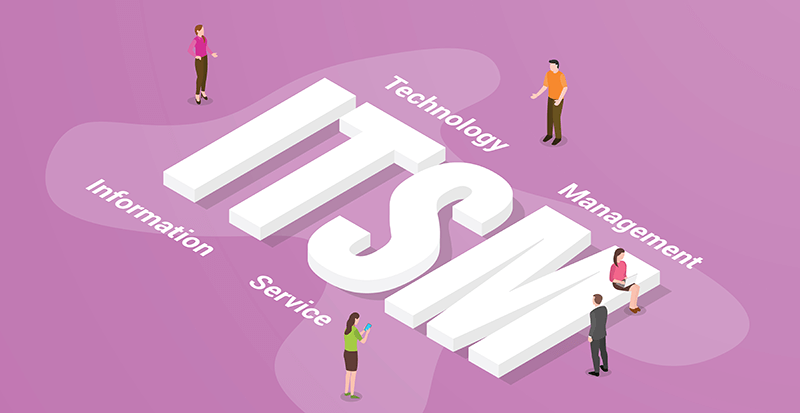
Information Technology Service Management refers to the entirety of activities, policies, and processes that organisations use to design, deliver, manage, and improve the IT services they provide to their users or customers. ITSM is primarily focused on aligning IT services with the needs of businesses to ensure that information technology supports core business processes and facilitates the achievement of business goals. Key Components of ITSM include:
Service Strategy
Involves designing, developing, and implementing IT service management as a strategic asset. It focuses on assessing and managing IT services from a market-driven perspective.
Service Design
The phase in ITSM is where services are designed to meet the needs of the business, including aspects like service catalogue management, service level management, capacity management, and information security management.
Service Transition
Covers the processes involved in the development and deployment of IT services. This includes change management, release and deployment management, and configuration management.
Service Operation
Focuses on the activities required to manage IT services on a day-to-day basis. This includes incident management, problem management, event management, and access management.
Continual Service Improvement (CSI)
Aims at improving and optimising IT services and processes continuously. It is based on the principle that service improvement should be an ongoing effort.
Principles of ITSM
Customer Focus: ITSM emphasises understanding and meeting the needs of customers and users, ensuring that IT services deliver value.
Quality Management: ITSM incorporates principles from quality management frameworks to ensure that IT services meet certain quality standards.
Process Approach: ITSM is often process-oriented, focusing on the efficient and effective management of IT service management processes.
Continuous Improvement: A core principle of ITSM is continuously evaluating and improving IT service management practices to enhance efficiency and effectiveness.
ITSM Frameworks and Standards
ITIL (Information Technology Infrastructure Library): Perhaps the most widely recognised framework for ITSM, offering a comprehensive set of best practices for delivering IT services.
ISO/IEC 20000: An international IT standard that specifies requirements for an organisation to establish, implement, maintain, and continuously improve a service management system (SMS).
COBIT (Control Objectives for Information and Related Technologies): A framework for IT governance and management, which can complement ITSM by providing a structure for control and governance of IT processes.
Six Sigma: A methodology that can be applied to ITSM for process improvement, focusing on reducing defects and improving process quality.
ITSM Tools
ITSM tools are software applications that support the activities and processes of ITSM. These tools can automate, track, and manage IT service processes and help organisations in delivering effective IT services. Common features of ITSM tools include incident management, problem management, change management, service request management, and configuration management databases (CMDB).
In summary, ITSM is a comprehensive approach to managing IT services that focuses on delivering and supporting IT services that meet the needs of the business. It involves a mix of processes, people, and technology to ensure that IT services are aligned with business objectives and deliver value efficiently and effectively.
What are the Benefits of ITIL?
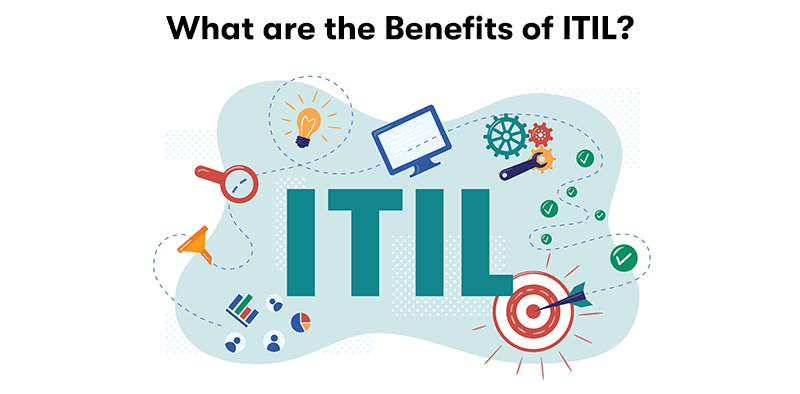
The adoption of ITIL 4 offers organisations a wide range of benefits, helping them navigate the complexities of modern IT service management more effectively. ITIL 4, with its updated framework, introduces a more flexible, holistic, and integrated approach to IT service management, emphasising the importance of collaboration, agility, and customer-centricity. Here are some key benefits of implementing ITIL 4:
Enhanced Alignment Between IT and Business
Improved Service Delivery: ITIL 4 focuses on creating value through services, ensuring that IT services are closely aligned with business needs and objectives, thereby improving service delivery and customer satisfaction.
Better Understanding of Value Creation: The Service Value System (SVS) and the Service Value Chain provide a clear framework for how every activity contributes to value creation, helping organisations to align their IT services more effectively with customer needs.
Increased Agility and Flexibility
Adaptability to Change: ITIL 4 incorporates principles from agile, DevOps, and Lean methodologies, making it easier for organisations to adapt to changes, innovate, and remain competitive in a fast-paced environment.
Flexibility in Service Management: The framework's modular approach allows organisations to tailor ITIL practices to their specific needs, promoting flexibility in how services are managed and delivered.
Improved Service Management Practices
Comprehensive and Integrated Approach: ITIL 4 provides an integrated set of management practices that cover various aspects of IT service management, from planning and delivery to continuous improvement.
Emphasis on Continuous Improvement: The continual improvement model encourages organisations to adopt an ongoing approach to improving service management practices, processes, and services.
Enhanced Customer Satisfaction
Customer-Centric Approach: ITIL 4 emphasises understanding and responding to customer needs and preferences, leading to improved customer satisfaction and loyalty.
Co-Creation of Value: The framework promotes the co-creation of value with customers and other stakeholders, ensuring that services are designed and delivered to maximise value for all parties involved.
Strengthened Governance and Risk Management
Clearer Governance Structure: ITIL 4 provides a robust governance framework that helps organisations establish clear policies, guidelines, and roles for IT service management.
Effective Risk Management: By adopting ITIL 4 practices, organisations can better identify, assess, and manage risks associated with IT services, leading to more reliable and secure service delivery.
Enhanced Collaboration and Communication
Promotion of Collaboration: The framework encourages collaboration and communication within IT teams and across the organisation, breaking down silos and fostering a culture of teamwork.
Integration with Other Practices: ITIL 4's compatibility with other practices like Agile, DevOps, and Lean IT facilitates better integration and collaboration between different teams and methodologies.
Professional Development and Skill Building
Skill Enhancement: ITIL 4 certification paths offer IT professionals the opportunity to develop and enhance their skills in IT service management, contributing to their professional growth and marketability.
Adoption of a Common Language: Implementing ITIL 4 helps establish a common language for IT service management within the organisation, improving communication and understanding among team members.
In summary, ITIL 4 provides organisations with a comprehensive framework that not only addresses the challenges of modern IT service management but also leverages opportunities presented by the digital era. Its flexible, integrated approach helps organisations to improve their IT services, align more closely with business goals, and ultimately deliver greater value to customers and stakeholders.
What are the Benefits of ITSM?
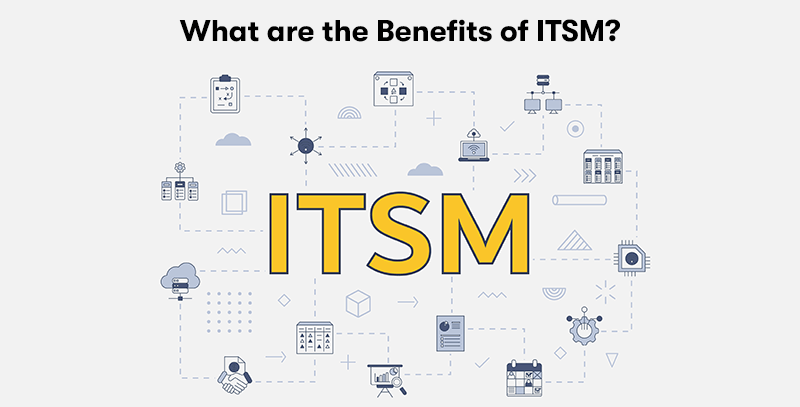
The benefits of Information Technology Service Management are wide-ranging and impactful, offering significant advantages to organisations that adopt its principles and practices. ITSM focuses on ensuring that IT services are aligned with the needs of the business and its customers, contributing to overall business efficiency, effectiveness, and agility. Here are some key benefits of implementing ITSM:
Improved Service Quality
Consistency: ITSM standardises IT processes and services, leading to more consistent and reliable IT service delivery.
Performance Monitoring: With ITSM, organisations can continuously monitor service performance against predefined benchmarks, enabling quick identification and rectification of issues.
Enhanced Customer Satisfaction
Alignment with Business Needs: By focusing on the delivery of services that meet the needs of the business and its customers, ITSM helps improve user experience and satisfaction.
Transparent Communication: Effective service level management and clear communication channels improve the relationship between IT and its customers.
Increased Efficiency and Productivity
Process Optimisation: ITSM encourages the optimisation of IT processes, which can lead to significant efficiencies and productivity gains within IT operations.
Automation: Many ITSM frameworks advocate for the automation of routine tasks, reducing the time and resources required for their completion.
Better Risk Management
Standardised Processes: The standardisation of IT processes helps identify, assess, and manage risks more effectively.
Compliance and Security: ITSM frameworks often focus on compliance with regulatory requirements and improving information security management.
Enhanced Agility and Flexibility
Adaptability: ITSM practices allow organisations to be more adaptable to changes in the business environment, including technological advancements and market shifts.
Continuous Improvement: A core principle of ITSM is continual service improvement, which fosters a culture of ongoing optimisation and adaptation.
Cost Savings
Resource Optimisation: ITSM helps in the optimal allocation and utilisation of IT resources, reducing waste and unnecessary expenses.
Predictable IT Costs: By improving the management of IT services, organisations can achieve more predictable IT operational costs.
Improved Decision Making
Data-Driven Insights: ITSM practices encourage the collection and analysis of data related to IT service delivery, providing valuable insights that can inform strategic decision-making.
Visibility and Control: ITSM gives organisations greater visibility into IT operations and more control over service management processes.
Enhanced Collaboration and Communication
Cross-Functional Teams: ITSM promotes using cross-functional teams, improving collaboration and communication between IT and other departments.
Knowledge Sharing: Effective ITSM includes knowledge management practices that facilitate the sharing of information and best practices within the organisation.
Strategic Alignment
Business and IT Alignment: ITSM ensures that IT services and processes support and align with the organisation's strategic objectives, enhancing overall business performance.
Competitive Advantage
Innovation and Service Improvement: By fostering a culture of continuous improvement and innovation in service delivery, organisations can maintain a competitive edge in the market.
Implementing ITSM can lead to transformative changes in how an organisation manages and delivers IT services, driving significant improvements in efficiency, effectiveness, and alignment with business goals. The specific benefits realised can vary depending on the organisation's size, complexity, and the maturity of its ITSM implementation.
Where Can You Learn More About ITIL and ITSM?
ITIL4 is the most widely recognised framework for IT-enabled services in the world. It supports organisations and individuals in gaining optimal value from IT and digital services. It helps define the direction of the service provider with a clear capability model and aligns them to the business strategy and customer needs.
ITIL4 provides comprehensive, practical, and proven guidance for establishing a service management system. It also provides a common language for businesses using IT-enabled services.
Click here for our ITIL 4 Training courses.
To learn more about ITSM, we have many ITSM blogs covering various topics. We also offer a range of IT service management courses.
Final Notes on ITIL vs ITSM
In conclusion, our exploration of ITIL 4 and ITSM has provided valuable insights into their roles in modern IT service management. While ITIL 4 offers a comprehensive framework emphasising adaptability, integration with other methodologies, and a focus on co-creating value, ITSM encompasses the broader practice of managing IT services to align with business needs. Both concepts are crucial for organisations looking to optimise their IT service delivery, enhance efficiency, and foster business growth.
Embracing ITIL 4 within the ITSM domain can lead organisations towards improved service management practices, fostering an environment of continuous improvement and collaboration. Ultimately, integrating ITIL 4 principles into ITSM strategies promises a pathway to achieving superior service management and operational excellence in the digital age.


